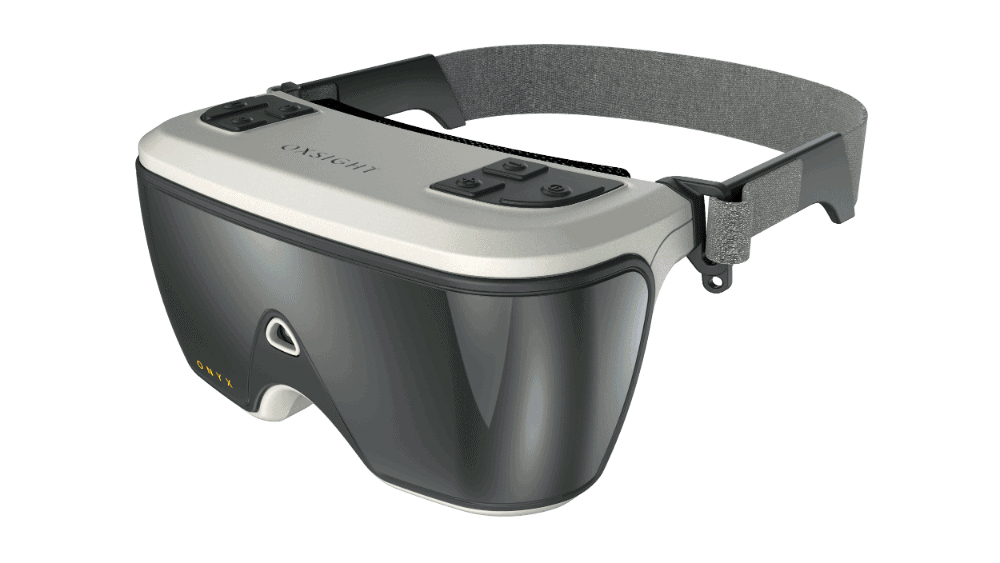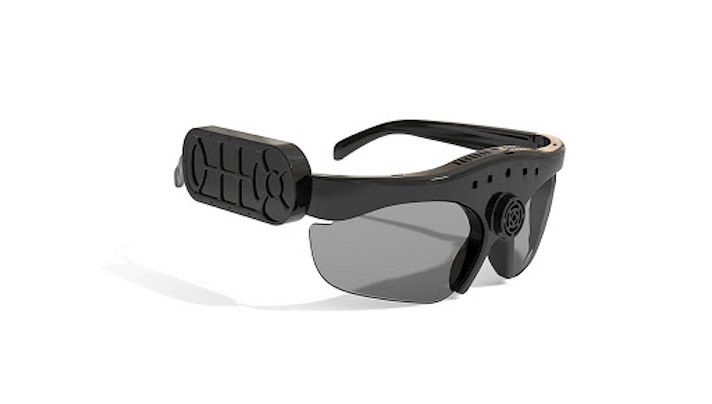Mobility Aids for Visually Impaired Users: Enhancing Independence and Navigation
Mobility Aids for Visually Impaired Users: Enhancing Independence and Navigation
Blog Article
Discover Advanced Assistive Tools for People With Aesthetic Disabilities
The landscape of assistive modern technology for individuals with aesthetic impairments is progressing swiftly, providing an array of innovative gadgets that boost autonomy and interaction. From clever glasses that seamlessly merge aesthetic input with acoustic assistance to sophisticated navigating applications that redefine spatial recognition, these tools are reshaping opportunities.
Smart Glasses Innovations
Smart glasses represent a considerable improvement in assistive innovation for people with aesthetic impairments. These ingenious tools incorporate different functions created to improve the individual's interaction with their atmosphere. Geared up with sensors and video cameras, wise glasses can record real-time aesthetic details, which is after that refined and communicated to the customer via sound responses or haptic sensations. This performance allows individuals to receive prompt descriptions of their surroundings, enhancing their capacity to browse and involve with the world.
In addition, advancements in fabricated intelligence have actually better improved the capabilities of clever glasses. Artificial intelligence formulas can identify faces, checked out text, and recognize things, making them very useful tools for day-to-day tasks. Individuals can obtain auditory cues that supply context regarding their environment, cultivating freedom and confidence.
Furthermore, the ergonomic layout and lightweight nature of lots of clever glasses make them suitable for extended usage, guaranteeing convenience while boosting functionality. As these gadgets proceed to evolve, they hold the prospective to change the way individuals with visual problems experience their day-to-day lives, linking the gap between access and innovation. The recurring study and development in this area assurance to broaden the possibilities for smart glasses, making them a vital element of modern assistive tools.
Navigating Apps and Equipment
Many navigating applications and devices have emerged as vital sources for people with aesthetic disabilities, dramatically improving their ability to traverse unfamiliar environments. These innovations leverage GPS performance, audio hints, and real-time information to give customers with specific navigating aid.
One prominent example is the Aira app, which links users to experienced agents that can give visual descriptions of environments and navigation support with a live video feed. This solution improves the user's spatial awareness and confidence while browsing. One more significant tool is Seeing Eye GPS, which offers voice-guided navigating and sights, enabling individuals to access vital details regarding their environments.

As modern technology proceeds to advance, the advancement of extra advanced navigating tools promises to more equip individuals with visual problems, facilitating seamless wheelchair and assimilation into varied environments. Such advancements are instrumental in promoting a much more comprehensive culture.
Braille Technology Developments
Over the last few years, advancements in Braille modern technology have dramatically transformed how people with aesthetic disabilities access information and involve with the world around them. The growth of portable Braille display screens has transformed analysis by enabling users to connect wirelessly to tablet computers, computers, and smartphones. These gadgets transform text into Braille in real-time, making it possible for seamless communication with digital material.
In addition, cutting-edge Braille printers have arised, boosting the production of responsive products. Modern embossers are quicker and extra effective, enabling the quick creation of Braille papers and academic materials. This effectiveness reduces the moment and cost related to producing Braille sources, making them extra her latest blog easily accessible to companies and institutions.
Furthermore, the combination of Braille with various other modern technologies, such as artificial intelligence and device learning, has actually opened new methods for tailored discovering experiences. Voice acknowledgment and synthesis modern technologies can enhance Braille, providing a comprehensive strategy to details dissemination.
As the demand for inclusive education and work environment atmospheres expands, these technical advancements play a vital duty in equipping individuals with visual impairments, guaranteeing they have equivalent accessibility to info and opportunities in different aspects of life.
Wearable Gadgets for Independence
A growing selection of wearable tools is boosting independence for individuals with visual disabilities, providing ingenious services that enhance navigation and everyday living. Braille displays and notetakers. These devices make use of sophisticated technologies to supply real-time responses and assistance, advertising autonomy in numerous environments

Wearable modern technology also consists of smartwatches that can be set with availability features, allowing individuals to obtain browse around this web-site notifications, track their places, and even call for help with the touch of a switch. Additionally, some tools incorporate expert system to analyze the atmosphere, offering sound summaries of nearby items or individuals.
Voice-Activated Assistive Solutions
Leveraging voice-activated assistive services has changed the landscape of assistance for people with aesthetic problems, giving hands-free interaction and access to a variety of tasks. These innovations use all-natural language processing and synthetic intelligence to enable customers to execute everyday tasks via easy voice commands.

Furthermore, current developments in voice acknowledgment precision have boosted the individual experience substantially, fitting diverse accents and speech patterns. This inclusivity makes certain that even more individuals can benefit from these modern technologies, fostering a better sense of freedom.
Conclusion
Finally, the development of advanced assistive tools considerably improves the independence and lifestyle for individuals with aesthetic impairments. Technologies such as wise glasses, navigating apps, Braille modern technology, wearable gadgets, and voice-activated solutions collectively cultivate a more comprehensive environment. These modern technologies empower customers to navigate their environments with self-confidence and engage more totally with the globe, inevitably promoting better ease of access and equal chances for individuals encountering aesthetic difficulties.
The landscape of assistive innovation for people with visual disabilities is evolving quickly, offering an array of innovative gadgets that enhance autonomy and interaction.Smart glasses stand for a significant improvement in assistive modern technology for individuals with visual disabilities. As these gadgets proceed to advance, they hold the potential to transform the method people with aesthetic disabilities experience their daily lives, linking the gap between access and innovation.In current years, innovations in Braille modern technology have considerably transformed how individuals with visual disabilities gain access to info and engage with the globe around them. These modern technologies encourage customers to browse their environments with self-confidence and involve more fully with the world, eventually promoting higher access and equal opportunities for individuals facing aesthetic obstacles.
Report this page